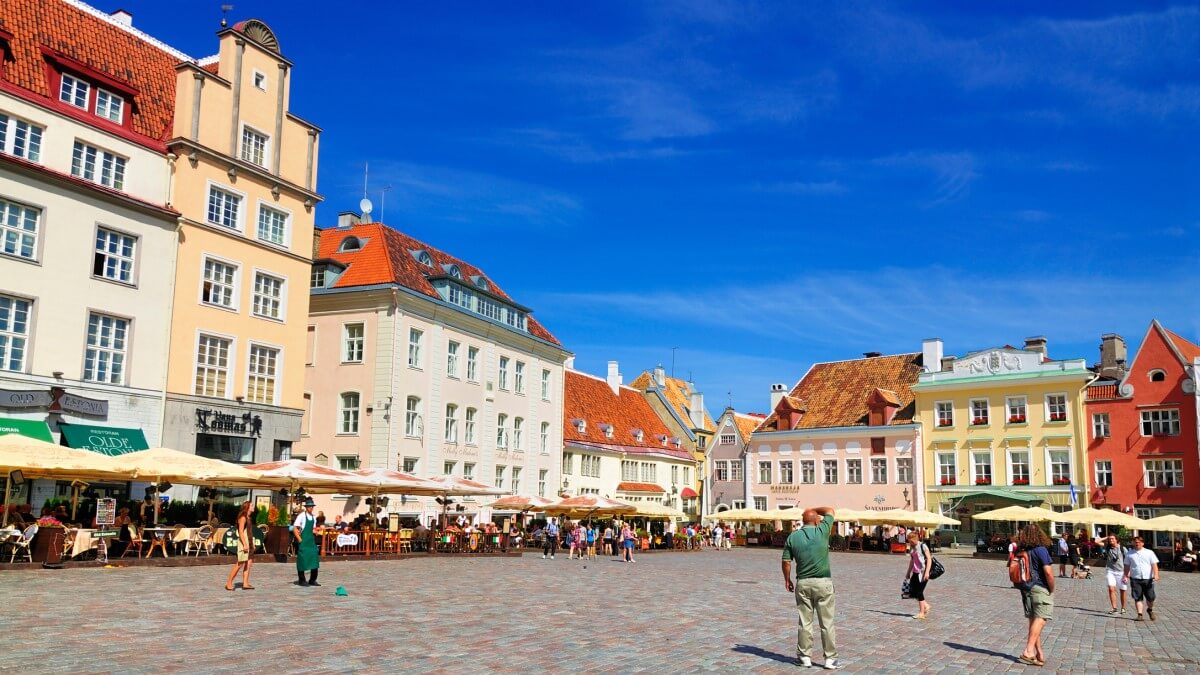
New Zealand and Estonia Revamp Work Visa Policies to Attract Skilled Workers in 2025
New Zealand and Estonia are making significant updates to their work visa regulations in 2025, aiming to attract skilled professionals to address labour shortages in various sectors. These changes are designed to streamline application processes, expand opportunities for foreign workers, and make both countries more appealing destinations for international talent.
New Zealand’s Work Visa Updates
New Zealand is overhauling its Accredited Employer Work Visa (AEWV) program to address its growing demand for skilled workers. The updates, set to roll out in four stages starting January 2025, focus on making it easier for employers to hire qualified international candidates while simplifying the process for workers.
Key Changes:
1. No Restrictions on Middle-Income Jobs:
Employers can now hire foreign workers for middle-income positions without additional restrictions, broadening employment opportunities.
2. Reduced Experience Requirements:
Most jobs now require only two years of experience, down from three, with lower thresholds for select roles.
3. Seasonal Worker Visas:
New visas for seasonal workers include a 3-year multi-entry visa for experienced workers and 7-month single-entry visas for lower-skilled roles.
4. Longer Visas for Low-Skilled Jobs:
Workers in low-skill roles (ANZSCO Levels 4 and 5) can now receive 3-year visas, with an optional 1-year extension.
5. Elimination of Median Wage Requirement:
The median wage requirement for AEWV and Supplementary Seasonal Work Visa (SSWV) workers was removed in March 2025. Employers must still offer fair wages and advertise roles in good faith.
Additional Changes:
· Streamlined Job Check Process:
By July 2025, Immigration New Zealand (INZ) will implement an improved job check process, simplifying applications for low-risk employers.
These updates are expected to ease hiring challenges for employers and make New Zealand a more attractive destination for skilled foreign workers.
Estonia’s Work Visa Reforms
Similarly, Estonia is enhancing its work visa policies to strengthen its reputation as a global tech hub and address labor shortages in industries such as IT, healthcare, manufacturing, agriculture, and construction. These updates focus on removing bureaucratic hurdles and supporting foreign workers and their families.
Key Updates:
1. Streamlined Application Process:
Estonia has simplified its visa process to reduce bureaucratic barriers, allowing skilled professionals to apply with fewer steps.
2. Revised Salary Thresholds and Remote Work Opportunities:
The introduction of the Digital Nomad Visa offers remote workers the chance to live in Estonia with a standardized income requirement of €3,504 per month.
3. Family-Friendly Policies:
Estonia is providing more flexibility for families. Spouses and children of foreign workers can apply for residence permits, work permits, and access educational opportunities.
4. Quick Processing for In-Demand Sectors:
Certain high-demand occupations, such as software developers, healthcare professionals, civil engineers, and electricians, are prioritized for faster visa processing.
In-Demand Sectors in Estonia
Estonia’s labor shortages are particularly acute in:
· Information Technology (IT): Software developers and ICT technicians with salaries ranging from €2,500 to €4,500 per month.
· Healthcare: Doctors and nurses earning between €2,000 and €3,500 per month.
· Manufacturing & Construction: Metalworkers, civil engineers, and electricians earning €1,500 to €3,000 per month.
The Estonian government has made these industries a priority in its effort to attract skilled professionals.
Types of Work Visas
New Zealand:
· Seasonal Worker Visas: For temporary, peak-season roles.
· AEWV (Accredited Employer Work Visa): Now with fewer restrictions for middle-income and low-skill jobs.
Estonia:
· Type D Long-Stay Visa: For employment contracts lasting up to 12 months.
· Temporary Residence Permit for Employment: Renewable for up to five years for longer-term work.
· EU Blue Card: For highly skilled workers with salaries at least 1.5 times the average wage.
· Startup Visa: For entrepreneurs establishing businesses in Estonia.
· Digital Nomad Visa: For remote workers earning €3,504 or more per month.
Family Support Policies
Both countries have introduced family-friendly policies to make relocation smoother for skilled workers and their dependents:
· New Zealand: Seasonal and low-skilled workers can now bring their families on extended visas.
· Estonia: Family members can apply for residence and work permits, as well as attend schools, ensuring a seamless transition for workers moving with their loved ones.
How to Apply
New Zealand:
1. Secure a job offer from an accredited employer.
2. Ensure your employer has passed the job check process.
3. Submit your visa application online.
Estonia:
1. Secure a job offer from an Estonian employer.
2. Prepare necessary documents (e.g., passport, employment contract, proof of qualifications).
3. Submit your application online or at the nearest Estonian embassy.
4. Complete the visa interview (if required).
Conclusion
With updated work visa policies in New Zealand and Estonia, 2025 is shaping up to be an excellent year for skilled professionals seeking international opportunities.
Whether you’re looking to build a career in New Zealand’s diverse job market or join Estonia’s thriving tech scene, these reforms open new doors for workers and their families. Both countries are committed to simplifying processes, supporting family relocation, and addressing labour shortages across high-demand sectors.
Now is the time to explore these exciting opportunities and make your next career move!
NB: The images and/or content, except where otherwise indicated, are taken directly from the web, if some images or content were inserted by mistake violating the copyright, please contact the administrator for immediate removal.
We publish all content with good intentions. If you own this content & believe your copyright was violated or infringed, please contact us for immediate removal.
